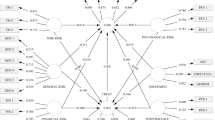Abstract
This research studied the behavioral factors of Internet users when making an on-line purchase. A total of 424 responses were collected in a survey, comprising of 179 online responses and 245 mailed responses. The research shows that demographic and most psychological factors, as well as web-savvy features of a virtual storefront appear non influential in determining the probability of an Internet user making a purchase. This is contrary to beliefs held by most e-commerce businesses. The research findings indicate that e-commerce businesses should focus on employing logo assurance services, state-of-the-art security technology, provide an online customer-service center, establish warranties for products and services sold, maintain credit card payment facilities, and lastly, establish a policy for conflict resolution in the event of inaccurate billings. With the research results, a behavioral model of online purchasers is established. The behavioral model could assist e-commerce businesses to focus on the real concerns of consumers. The contribution of the model is to allow e-commerce businesses to streamline their online activities to cater to the major behavioral factors that influence consumers to purchase online. This could greatly increase the ability of e-commerce businesses to offer competitive virtue selling.
Similar content being viewed by others
References
Accone, T. (1997). “Net Shopping Soars, But Can The Virtual Replace Real People?” Available at http://www.btimes.co.za/97/0907/tech/tech2.htm.
Andersen Consulting. (2000). “Despite Problems, Online Shoppers Stick to the Web.” January. Available at http://www.emarketer.com/estats/011200_ac.html.
AT&T Labs. (1999). “Internet Privacy a Complex Issue.” In Beyond Concern: Understanding Net Users' Attitudes About Online Privacy. April. Available at http://cyberatlas.internet.com/big_picture/demographics/article/0,1323,5911_153901,00.html.
BBBOnLine. (1999). “Consumers Concerned with Reliability.” January. Available at http://cyberatlas.internet.com/big_picture/demographics/article/0,1323,5911_153551,00.html.
Consumers International. (1999). “E-Commerce Flunks International Test.” Consumers@shopping: An International Comparative of Electronic Commerce, June. Available at http://cyberatlas.internet.com/big_picture/demographics/article/0,1323,5911_153771,00.html.
Cyber Dialogue. (2000). “Up Close And Personal.” Online Privacy Survey, January. Available at http://www.emarketer.com/estats/010500_person.html.
Datamonitor. (1999). “Customer Service Worries Online Shoppers.” November. Available at http://cyberatlas.internet.com/big_picture/demographics/article/0,1323,5911_244341,00.html.
Emarketer. (1998). “eMarketers eCommerce Retail Shopping Report.” Available at www.emarketer.com/estats/ecsr_sneak1.html.
Emarketer. (2000). “The eMarketer eCommerce Report.” Available at http://www.emarketer.com/enews/enews_ecreport.html.
Ernst & Young. (2000). “Canadians Getting Comfortable with Online Shopping,” January. Available at http://cyberatlas.internet.com/big_picture/demographics/article/0,1323,5911_288521,00.html.
Forrester Research. (1999). “Consumers Fear for Their Online Privacy.” Technographics Report, November. Available at http://cyberatlas.internet.com/big_picture/demographics/article/0,1323,591l_228341,00.html.
Intermarket Group. (1999). “One-Third of Internet Users Have Made Online Purchasers.” Internet Commerce Briefing, September. Available at http://cyberatlas.internet.com/big_picture/demographics/article/0,1323,5911_196411,00.html.
J.C Williams Group. (1999). “Canadian Online Retail Should Pass $1 Billion.” December. Available at http://cyberatlas.internet.com/big_picture/demographics/article/0,1323,5911_252321,00.html.
Masland, M. (1999). “The Dark Side of Online Shopping.” June. Available at http://www.msnbc.com/news/283239.asp.
National Computer Board. (1998). “Major Findings of the Market Study on Electronic Commerce 98.” Survey on General Public. Available at http://www.ec.gov.sg/ECSurvey.html.
National Consumer League. (1999). “Six Million Victims of Web Fraud.” May. Available at http://cyberatlas.internet.com/big_picture/demographics/article/0,1323,5911_153631,00.html.
NetProfit Magazine. (1998). “10 Elements of a Successful Web Store,” May. Available at http://www.eRetail.Net/1998/features/05/980510.htm.
Schwartz, E.I. (1997). “Consumers Must be Compensated for Disclosing Data about Themselves.” In Webonomics: Nine Essential Principles for Growing Your Business on the World Wide Web, 1st Edition. New York: Broadway Books, p. 73.
Straker, D. (1995). A Toolbook for Quality Improvement and Problem Solving. UK, Prentice-Hall.
Strauss, D. (1999). “How To Shop Online.” Available at http://www.netguide.com/snapshot/archive?guide=shopping&id=830.
Wilson, R.F. (1997). “Building Consumer Confidence on the Web.” January. Available at http://www.wilsonweb.com/articles/confidence.htm.
Author information
Authors and Affiliations
Rights and permissions
About this article
Cite this article
Lee, PM. Behavioral Model of Online Purchasers in E-Commerce Environment. Electronic Commerce Research 2, 75–85 (2002). https://doi.org/10.1023/A:1013340118965
Issue Date:
DOI: https://doi.org/10.1023/A:1013340118965




